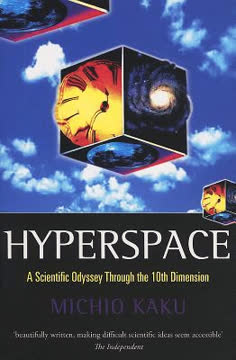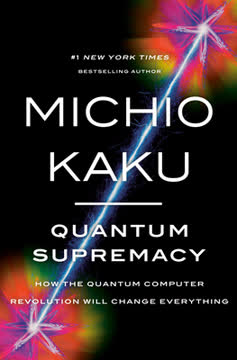Key Takeaways
1. The universe may be one of many in a vast multiverse
"There are worlds infinite in number and different in size. In some there is neither sun nor moon. In others, there are more than one sun and moon. The distances between the worlds are unequal, in some directions there are more of them . . . Their destruction comes about through collision with one another. Some worlds are destitute of animal and plant life and of all moisture."
Multiverse theories. The idea that our universe is just one of many has gained traction among physicists. Inflationary theory suggests the universe underwent rapid expansion after the Big Bang, potentially spawning countless "bubble universes." M-theory, an extension of string theory, proposes an 11-dimensional "multiverse" of parallel realities. These theories attempt to explain puzzling features of our universe:
- Fine-tuning: Physical constants appear precisely calibrated to allow life
- Cosmic coincidences: Earth exists in multiple "Goldilocks zones"
- Quantum effects: Particles can exist in multiple states simultaneously
Implications. If true, the multiverse concept would revolutionize our understanding of reality:
- Our universe may not be unique or designed for us
- Different physical laws could exist in other universes
- The total number of universes may be infinite
2. String theory offers a unified explanation for all physical forces
"The universe can now be viewed as a vast symphony of strings."
Unifying physics. String theory proposes that all matter and forces arise from tiny vibrating strings in higher dimensions. This offers a way to reconcile quantum mechanics with gravity - a long-standing goal in physics. Key aspects include:
- Strings vibrate in different ways to produce all known particles
- Extra spatial dimensions beyond the familiar three
- Supersymmetry between matter particles and force particles
Challenges remain. While mathematically elegant, string theory faces hurdles:
- No experimental evidence yet
- Requires extra dimensions we can't directly observe
- Many possible solutions, making predictions difficult
Despite this, string theory remains the leading candidate for a "theory of everything" unifying all physical laws.
3. Parallel universes could explain fine-tuning and cosmic coincidences
"If there is a large stock of clothing, you're not surprised to find a suit that fits. If there are many universes, each governed by a differing set of numbers, there will be one where there is a particular set of numbers suitable to life. We are in that one."
Anthropic principle. Our universe appears finely tuned for life in many ways:
- Fundamental constants precisely calibrated
- Earth positioned in multiple "Goldilocks zones"
- Complex chemistry allowing DNA to form
This has led some to argue for intelligent design. However, in a vast multiverse containing diverse universes, the emergence of life-friendly conditions becomes more probable through sheer numbers.
Selection bias. We necessarily find ourselves in a universe compatible with our existence, regardless of how rare such universes might be overall. This doesn't require design, just as finding a habitable planet doesn't mean the entire cosmos was created for us. The multiverse concept thus offers a naturalistic explanation for apparent fine-tuning without resorting to supernatural causes.
4. Higher dimensions may exist beyond the four we can perceive
"If you had a supermicroscope and could peer into the heart of an electron, you would see not a point particle but a vibrating string."
Extra dimensions. String theory requires additional spatial dimensions beyond length, width, and height. These extra dimensions are theorized to be:
- Extremely small (10^-33 cm)
- "Curled up" so we can't directly perceive them
- Potentially large but inaccessible to us
Implications. If real, extra dimensions could explain:
- Hierarchy problem: Why gravity is so much weaker than other forces
- Dark matter: As matter in higher dimensions affecting our 3D space
- Unified forces: As different vibrations in higher-dimensional strings
Experiments like the Large Hadron Collider are searching for evidence of extra dimensions through particle collisions and missing energy signatures.
5. Dark matter and dark energy dominate the universe's composition
"Visible matter we see around us (including the mountains, planets, stars, and galaxies) makes up a paltry 4 percent of the total matter and energy content of the universe."
Invisible universe. Observations reveal that ordinary matter is just a small fraction of what exists:
- Dark matter: 23% - Only interacts via gravity, holds galaxies together
- Dark energy: 73% - Mysterious force accelerating cosmic expansion
- Visible matter: 4% - Stars, planets, gas, and everything we can see
Ongoing mystery. The nature of dark matter and dark energy remains unknown:
- Dark matter candidates: WIMPs, axions, primordial black holes
- Dark energy theories: Vacuum energy, quintessence, modified gravity
Resolving these mysteries is a major goal of modern cosmology and particle physics.
6. Gravity waves and new experiments may test exotic theories
"We are in the midst of a revolution in experimental science, with the full power of satellites, space telescopes, gravity wave detectors, and lasers being brought to bear on these questions."
New frontiers. Advanced instruments are probing the cosmos in unprecedented ways:
- LIGO: Detected gravitational waves from colliding black holes
- LISA: Future space-based detector to study primordial gravity waves
- Large Hadron Collider: Searching for supersymmetry and extra dimensions
Potential breakthroughs. These experiments could provide evidence for:
- Cosmic inflation in the early universe
- Higher dimensions predicted by string theory
- Supersymmetric particles as dark matter candidates
While many theories remain speculative, new data may soon distinguish between competing ideas about the nature of reality.
7. The universe's ultimate fate appears to be a "big freeze"
"Eventually, this will mean that thirty-six galaxies in the local group of galaxies will make up the entire visible universe, as billions of neighboring galaxies speed past our event horizon."
Accelerating expansion. Recent observations indicate the universe is expanding at an increasing rate due to dark energy. This leads to a bleak long-term future:
- Galaxies beyond our local group will disappear from view
- Stars will exhaust their fuel and die out
- Matter will be spread ever thinner across vast distances
- Temperatures will approach absolute zero
Heat death. In this scenario, the universe becomes a cold, dark, and virtually empty place inhospitable to life as we know it. This process will take trillions of years, but appears inevitable based on current understanding.
8. Intelligent life may need to escape our universe in the far future
"When facing the ultimate death of the universe, is it possible that civilizations trillions of years ahead of us will assemble the necessary technology to leave our universe in a dimensional 'lifeboat' and drift toward another, much younger and hotter universe?"
Cosmic escape. While speculative, some physicists propose advanced civilizations might find ways to survive universal heat death:
- Creating or accessing wormholes to other universes
- Manipulating higher dimensions to enter parallel realities
- Initiating a new Big Bang to spawn a fresh cosmos
Philosophical implications. These ideas raise profound questions:
- Could intelligent life become the seeds of new universes?
- Might our own universe be the creation of an earlier civilization?
- Is the perpetuation of consciousness a fundamental feature of reality?
While far beyond current capabilities, such notions illustrate how cosmology intersects with philosophy and the ultimate fate of intelligence in the cosmos.
Last updated:
FAQ
What's Parallel Worlds about?
- Exploration of Cosmology: Parallel Worlds by Michio Kaku explores the universe's origins, structure, and potential futures, tracing the evolution of cosmological thought from ancient myths to modern scientific theories.
- Focus on Theoretical Physics: The book delves into theoretical physics, discussing concepts like higher dimensions, time travel, and the multiverse, challenging our understanding of the universe.
- Interplay of Science and Philosophy: Kaku intertwines scientific discoveries with philosophical questions about existence, consciousness, and humanity's place in the universe.
Why should I read Parallel Worlds?
- Accessible Science: Michio Kaku presents complex scientific ideas in an engaging and accessible manner, making it suitable for both science enthusiasts and general readers.
- Cutting-Edge Theories: The book provides insights into the latest developments in physics and cosmology, including the quest for a unified theory and the implications of these theories for our understanding of the universe.
- Thought-Provoking Concepts: Readers will encounter thought-provoking concepts such as the nature of time, the possibility of time travel, and the existence of multiple universes.
What are the key takeaways of Parallel Worlds?
- Evolution of Cosmology: The book outlines the historical progression of cosmological thought, emphasizing how each revolution in thought has reshaped our understanding of the universe.
- Multiverse and Higher Dimensions: Kaku explains the multiverse theory and the concept of higher dimensions, suggesting that our universe may be just one of many within a larger, more complex structure.
- Future of Humanity: Kaku speculates on the potential for humanity to survive beyond our universe, possibly through advanced technology that allows for travel to parallel worlds.
What are the best quotes from Parallel Worlds and what do they mean?
- "Nothing cannot come from nothing.": This quote reflects the inquiry into the origins of the universe, suggesting that the universe must have a cause or a beginning.
- "The universe is the ultimate free lunch.": Kaku uses this phrase to illustrate the idea that the universe can emerge from a state of nothingness, challenging traditional notions of creation.
- "Inside every black hole that collapses may lie the seeds of a new expanding universe.": This quote hints at the possibility that black holes could serve as gateways to new universes.
What is the inflationary universe theory discussed in Parallel Worlds?
- Rapid Expansion: The inflationary universe theory posits that the universe underwent a rapid expansion immediately after the big bang, explaining the uniformity observed in the cosmic microwave background radiation.
- Solving Cosmological Problems: Inflation addresses issues like the flatness and horizon problems by stretching the universe, accounting for its observed uniformity and density.
- Quantum Fluctuations: The theory suggests that tiny quantum fluctuations in the early universe were magnified during inflation, leading to the formation of galaxies and large-scale structures.
How does Parallel Worlds explain the concept of the multiverse?
- Multiple Universes: The multiverse concept proposes that our universe is just one of many, each with its own distinct physical laws and constants, arising from quantum mechanics and inflationary theory.
- Spontaneous Creation: Kaku explains that universes can spontaneously bud off from one another, suggesting that new universes are continually being created.
- Implications for Existence: The existence of a multiverse raises profound questions about reality, existence, and the nature of life, challenging our understanding of the universe.
How does Parallel Worlds relate quantum mechanics to parallel universes?
- Quantum Superposition: Kaku explains that quantum mechanics allows particles to exist in multiple states simultaneously, leading to the idea of parallel universes.
- Many-Worlds Interpretation: This concept is rooted in the many-worlds interpretation of quantum mechanics, suggesting that every possible outcome of a quantum event occurs in its own universe.
- Experimental Evidence: While speculative, ongoing experiments in quantum mechanics may provide insights into the nature of parallel universes.
What role do black holes play in Parallel Worlds?
- Cosmic Phenomena: Kaku describes black holes as regions of space where gravity is so strong that nothing can escape, challenging our understanding of physics.
- Wormholes and Time Travel: The book discusses the theoretical possibility of wormholes, which could connect different points in space and time, potentially serving as gateways to other universes.
- Formation of New Universes: Kaku speculates that collapsing black holes could give rise to new expanding universes, connecting them to themes of creation and cosmic evolution.
What is the significance of dark matter and dark energy in Parallel Worlds?
- Understanding the Universe: Dark matter and dark energy make up the majority of the universe's mass-energy content, yet remain largely mysterious, inferred from gravitational effects and cosmic expansion.
- Challenges for Physicists: Their nature presents significant challenges for physicists, as they seek to understand their properties and implications.
- Impact on Cosmology: Dark matter and dark energy play crucial roles in shaping the structure and evolution of the universe, emphasized in cosmological models.
How does Parallel Worlds address the fate of the universe?
- Big Freeze Scenario: Kaku discusses the possibility of a "big freeze," where the universe continues to expand indefinitely, leading to a cold, dark, and lifeless cosmos.
- Advanced Civilizations: The book speculates on how advanced civilizations might escape the dying universe by finding ways to travel to other, more hospitable universes.
- Philosophical Reflections: Kaku encourages readers to reflect on the implications of these scenarios for humanity's future, raising questions about existence and purpose.
How does Kaku address the future of humanity in Parallel Worlds?
- Survival Beyond Earth: Kaku speculates on the potential for humanity to escape a dying universe through advanced technology and exploration of parallel worlds.
- Technological Advancements: The book highlights the role of technology in shaping our future, including new methods for space travel and exploration.
- Philosophical Implications: Kaku encourages readers to consider the ethical and philosophical implications of humanity's future, advocating for a proactive approach to ensuring a positive legacy.
What are the challenges of proving string theory as discussed in Parallel Worlds?
- Experimental Validation: Kaku outlines the difficulties in experimentally validating string theory due to its complex mathematical framework and the high energies required for testing.
- Theoretical Hurdles: The book discusses the need for a unified framework that incorporates gravity and quantum mechanics, highlighting ongoing research.
- Future Prospects: Kaku remains optimistic about string theory's potential to provide a comprehensive understanding of the universe, emphasizing continued exploration and experimentation.
Review Summary
Parallel Worlds receives mixed reviews, with many praising Kaku's ability to explain complex scientific concepts in an engaging manner. Readers appreciate his enthusiasm and use of pop culture references. Some criticize the book for straying into speculative territory and philosophical musings. The historical overview of physics and explanations of current theories are generally well-received. However, a few readers find the content outdated or lacking in depth. Overall, it's recommended for those interested in cosmology and theoretical physics, though some caution it may not satisfy more scientifically-inclined readers.
Similar Books
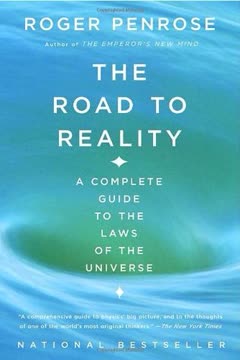

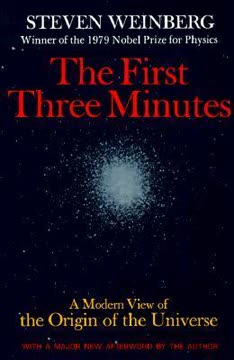
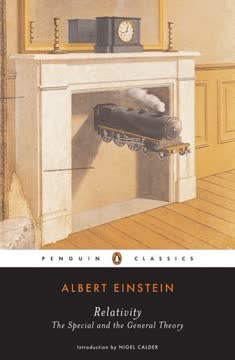


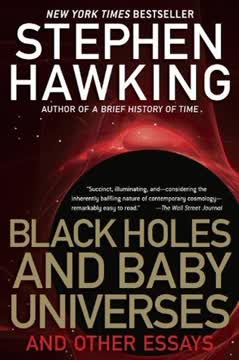
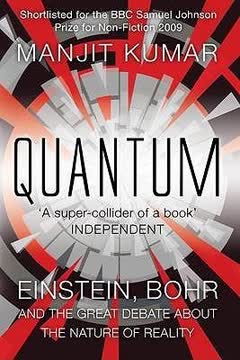
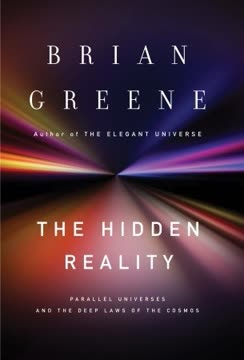
Download PDF
Download EPUB
.epub digital book format is ideal for reading ebooks on phones, tablets, and e-readers.


